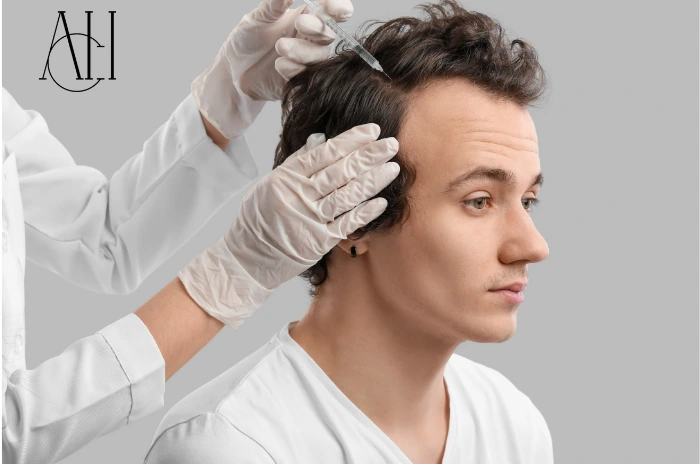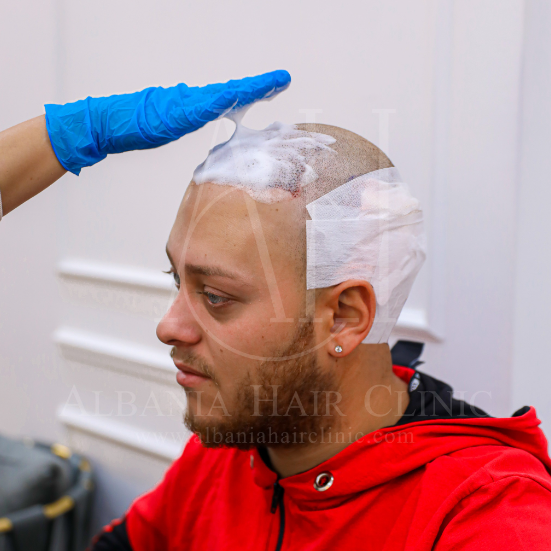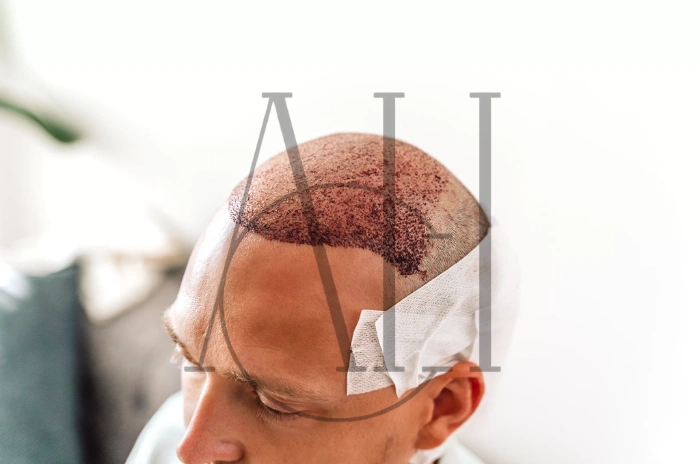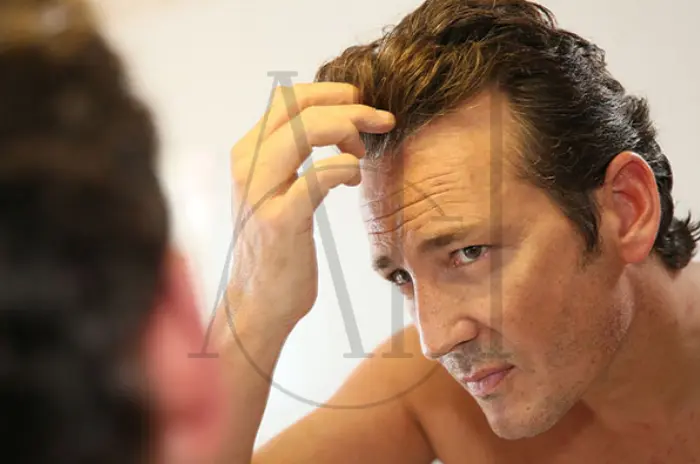Hair transplants are one of the most popular solutions for restoring lost hair and boosting confidence. But one of the biggest concerns people have before getting a hair transplant is how thick or dense their hair will look after the procedure. Hair density plays a key role in achieving a natural look and ensuring long-lasting results. In this blog, we will explore what to expect in terms of hair density after a transplant, how it changes over time, and what you can do to get the best results.
Table of Contents
ToggleWhat Happens in the First 6 Months After a Hair Transplant?
The First Few Weeks
In the first few weeks after a hair transplant, the scalp will go through the initial healing process. Scabs will form around the grafts, and it’s important not to touch or scratch them. Around the second or third week, you may notice that the transplanted hair starts to fall out. This is completely normal and is known as “shock loss.” It is part of the healing process and should not be a cause for concern.
Month 2 to 6: Slow Growth Begins
From the second month onward, new hair will slowly start to grow. The growth may be thin and fine at first, but it indicates that the follicles are alive and healthy. By the end of the sixth month, most patients will see 40% to 50% of their final results. Hair begins to cover the treated areas more noticeably, and you can start to see the shape of your new hairline.
Does Hair Transplant Hair Thicken After 6 Months?
Gradual Thickening
Yes, hair does continue to thicken after 6 months. In fact, most of the significant improvements in density and thickness occur between months 6 and 12. During this time, the hair becomes more pigmented and the strands increase in diameter, making the overall appearance fuller and more natural.
Ongoing Improvement
Even though the visible changes start to become more noticeable, this is still not the final outcome. Hair follicles grow at different rates, and not all grafts mature at the same time. Some areas may look thinner than others at first, but with time and proper care, the density usually evens out.
Albania Hair Clinic – Trapianto Capelli in Albania (@albaniahairclinic)’in paylaştığı bir gönderi
What Can You Expect 8–12 Months After a Hair Transplant?
8 Months: A Clearer Picture
By the 8th month, most patients can see around 70% to 80% of the final results. The hair looks thicker, healthier, and blends more naturally with the existing hair. It is easier to style, and the overall coverage improves, especially in previously bald areas.
12 Months: The Final Outcome
The one-year mark is when most people reach their final hair density. At this point, the hair is typically dense enough to style in different ways and looks completely natural. Some people may continue to see minor improvements for up to 18 months, particularly if the hair is naturally slow-growing.
Do You Need to Shave Your Head for a Hair Transplant?
It Depends on the Technique
Whether or not you need to shave your head depends on the method used for your hair transplant. In Follicular Unit Extraction (FUE), it is common to shave both the donor and recipient areas. However, in Follicular Unit Transplantation (FUT), only a strip of the donor area might be shaved. Some clinics offer “no-shave” or partial-shave options for patients who prefer not to cut their hair short.
Consider Clinic Policies
It’s important to talk to your clinic about their specific approach. While shaving may offer better visibility for the surgeon, modern techniques allow for more flexibility, especially for those who want to keep their existing hairstyle during the recovery phase.
How to Get the Best Hair Transplant Results?
Choose a Skilled Surgeon
Getting the best results starts with choosing a qualified and experienced surgeon. Look for clinics that specialize in hair restoration and have a portfolio of before-and-after photos. The expertise of the surgeon plays a major role in designing a natural-looking hairline and achieving good density.
Follow Aftercare Guidelines
Post-operative care is just as important as the surgery itself. Follow all instructions provided by your doctor. This includes avoiding smoking, staying out of the sun, not touching the grafts, and using any prescribed medications or shampoos. These steps help prevent infections and ensure better hair growth.
Be Realistic and Patient
Hair transplants are not a quick fix. While the results are permanent, they take time to fully develop. Patience is key. Comparing your progress to others may lead to unnecessary worry. Everyone’s hair grows at a different pace, and final results can take up to a year or more.

Hair Transplant After 7 Days
Healing in Progress
After one week, most of the scabs from the surgery will have started to fall off. The donor area may still be a bit sore, and you might experience some redness in the recipient area. This is all part of the normal healing process.
Still Be Careful
Even though you may feel better, it is still important to be gentle with your scalp. Avoid hard brushing, wearing tight hats, or doing intense physical activity. Keeping the area clean and moisturized as recommended by your doctor will help ensure good graft survival.
How Long Does Hair Transplant Recovery Take?
Short-Term Recovery
The short-term recovery period usually lasts around 7 to 10 days. During this time, the most noticeable signs of surgery like swelling and redness begin to fade. Most people are able to return to work and social activities within this period, especially if the transplant was done using minimally invasive techniques.
Long-Term Healing
Full recovery and hair growth take much longer. It can take 6 to 12 months for the new hair to grow in completely and reach its full density. Some people may need follow-up treatments or medications to support long-term results.
Hair Transplant Recovery Stages
Stage 1: Days 1–7
In the first week, healing starts. Scabs form around the grafts, and it is important to avoid touching or scratching your scalp. Washing must be done gently using special shampoo provided by your clinic.
Stage 2: Weeks 2–4
This stage is often called the shedding phase. The transplanted hair may fall out, but the roots remain and will start growing again in the coming months. Don’t be alarmed—this is completely normal.
Stage 3: Month 2–6
Hair begins to regrow. At first, it may be thin and soft, but it gradually becomes thicker and stronger. By month 6, you should see visible improvement in coverage and density.
Stage 4: Month 6–12
Hair matures and fills out. By this point, most of the final results are visible. The hair can be styled, and any scars or signs of surgery should be minimal or gone.
Hair Transplant After 1 Month
Shedding Phase Continues
At one month, the shedding of the transplanted hair may still be happening. It can be worrying to see hair falling out, but remember, the roots are intact and new growth is on the way.
Early Growth
Some people may notice tiny new hairs beginning to grow. These will be thin at first but will improve in texture and thickness over time. Stay consistent with your care routine to support this early phase.
Understanding the Role of Density in Hair Transplant Procedures
What Is Density in Hair Transplants?
Density refers to how many hairs are implanted per square centimeter of scalp. Natural hair has high density, and matching this level in a transplant is key to making the results look real. Surgeons calculate the number of grafts needed based on the size of the area and the desired thickness.
Realistic Goals
It may not always be possible to match natural density in one session, especially for large areas. Sometimes, two or more procedures are needed to achieve the desired fullness. Knowing this helps you set realistic expectations from the start.
Why Is Hair Density Important for Transplants?
Full Coverage
Good density helps to cover bald or thinning areas effectively. It makes the hair appear fuller and hides the scalp, especially under bright light or when the hair is wet.
Natural Look
Hair with proper density blends well with your existing hair and does not look patchy or thin. It improves your appearance and boosts confidence because the results are hard to detect as a transplant.

Are You a Good Candidate for a Hair Transplant?
What Doctors Look For
Good candidates usually have enough donor hair, a stable hair loss pattern, and realistic expectations. Your age, hair type, and overall health also affect your suitability.
Medical Evaluation
A proper consultation with a qualified surgeon includes a scalp examination, medical history check, and discussion of goals. This helps create a personalized plan that offers the best chance of success.
What Happens If You Get No Density 5 Months After Hair Transplant?
Don’t Jump to Conclusions
It is not uncommon for some patients to feel concerned about low density at the 5-month mark. However, this period is still considered early in the hair growth journey.
Keep Monitoring
Hair continues to improve in months 6 to 12. If there is little to no progress by month 8 or 9, it may be worth revisiting your clinic for an assessment.
What to Do If There Is No Density After 5 Months After Hair Transplant?
Talk to Your Surgeon
If you see no improvement at all, schedule a follow-up with your clinic. They may recommend supplements, medications like minoxidil, or additional PRP treatments to boost growth.
Give It Time
Unless your doctor sees a problem, they will likely suggest waiting a few more months. Many patients see a big difference between months 5 and 8.
Risks of High Density Hair Transplant Surgery
Overloading the Scalp
Trying to implant too many grafts in a small area can damage the skin and reduce blood flow, causing poor growth or even scarring. This is why experienced planning is important.
Healing Problems
Excessive grafts may lead to slower healing, infections, or a less natural look. A balanced approach is always better than forcing too much density in one session.
How Is a High Density Hair Transplant Achieved?
Detailed Planning
The surgeon creates a design that matches your natural hairline and spreads grafts evenly. This includes choosing the right angles and directions for each follicle.
Experience Matters
Only skilled professionals can safely achieve high density without damaging the scalp. Choosing the right team ensures better results and fewer risks.
Arequently Asked Questions
How long does it take to see full hair density after a transplant?
Most people see full hair density 12 months after a hair transplant. Some may need up to 18 months for full results, especially if the hair grows slowly.
Is it normal to have low hair density 5 months after transplant?
Yes, it’s normal. At 5 months, the hair is still growing. You may only see 30–50% of the final results. Full density comes later.
Can hair density improve after 6 months?
Yes. After 6 months, hair continues to grow thicker and fuller. Most people see big changes between months 6 and 12.
How can I increase hair density after a transplant?
Follow your doctor’s care plan, avoid smoking, eat healthy, and use recommended products like minoxidil. PRP therapy can also help.
What is considered good hair density after a transplant?
Good density is about 30–40 grafts per cmu00b2. This gives a natural look and good coverage, especially in the front hairline.




